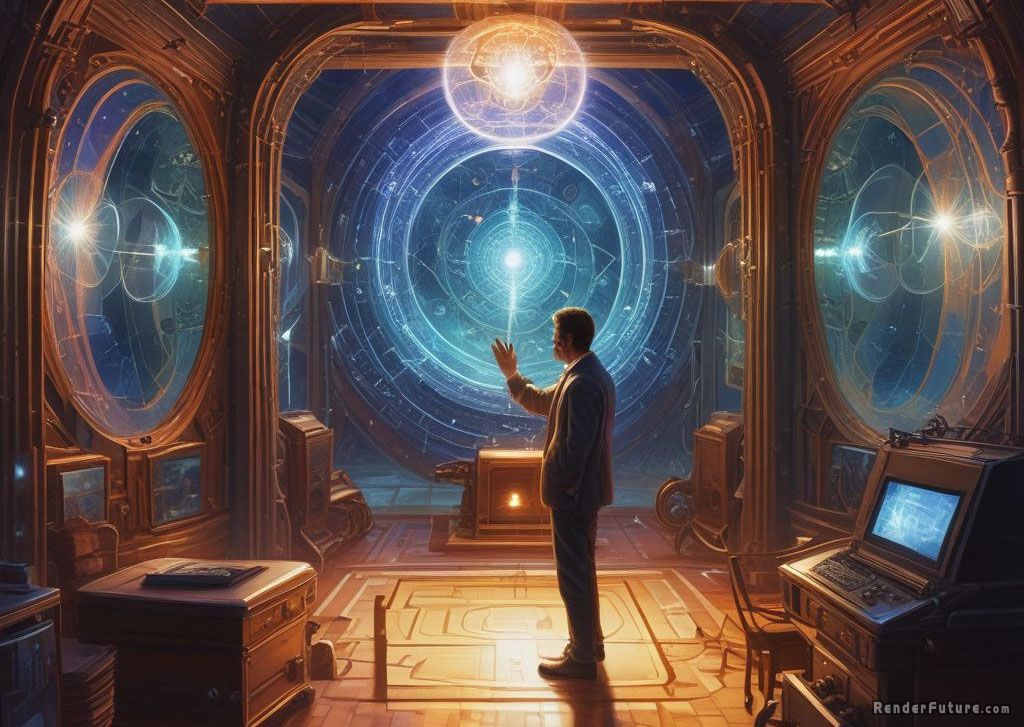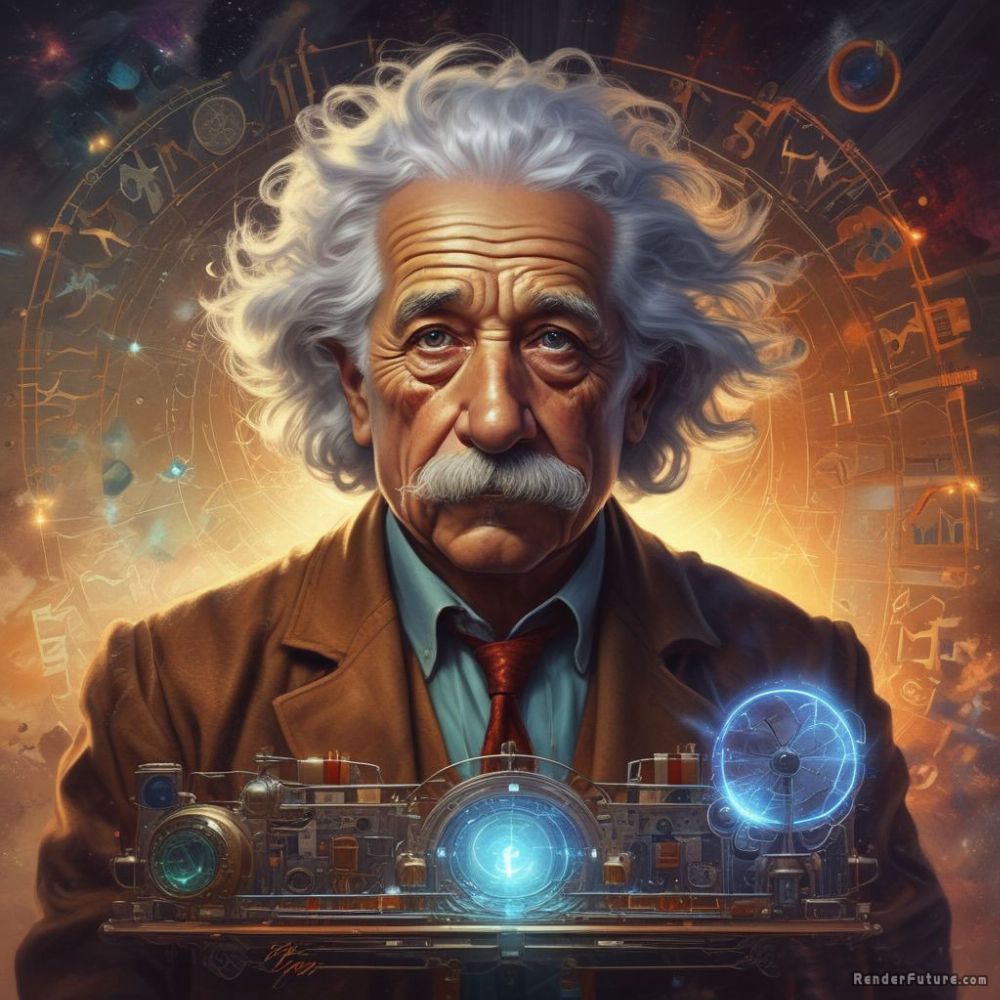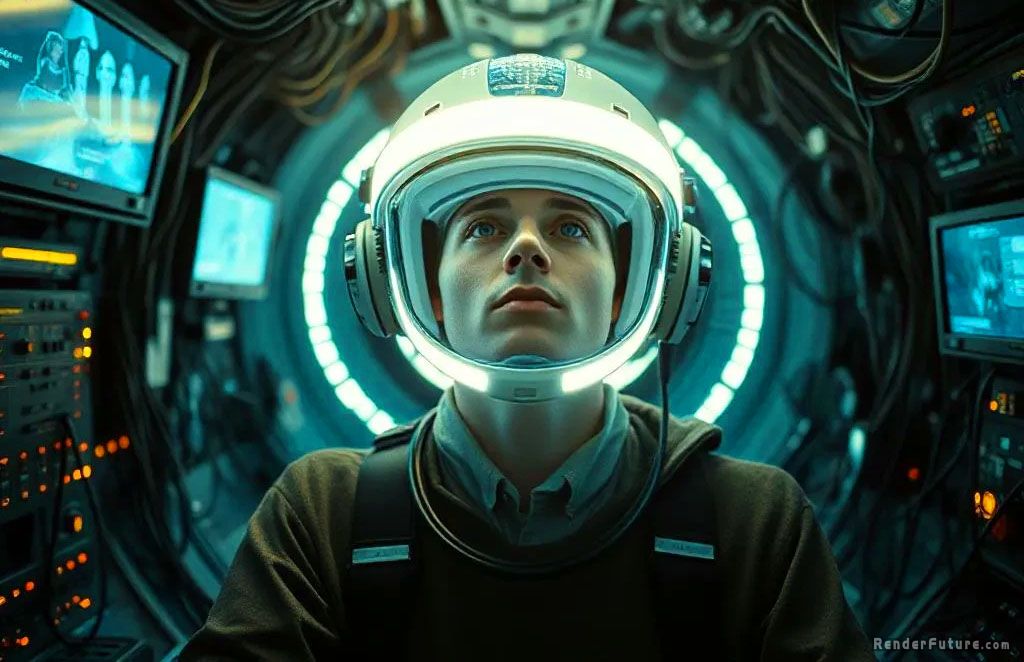Time Travel Is Real
How We Do It Now and Where We’re Headed
You’re Already a Time Traveler (Yes, Really)
Let’s get one thing straight – you’re traveling through time right now. Every single second, you’re hurtling into the future at the steady pace of… well, one second per second. It might not feel as flashy as a DeLorean hitting 88 mph, but it counts.
But here’s where things get wild: we’re already bending time in ways that would make Einstein nod in approval.
1. The Universe Is a Time Machine (Just Look Up)

Every time you gaze at the stars, you’re literally looking into the past. Light takes time to travel, so when you see:
- The Moon? You’re seeing it 1.3 seconds ago.
- The Sun? 8 minutes ago.
- The Andromeda Galaxy? 2.5 million years ago (you’re basically peeking at prehistoric Earth).
NASA’s telescopes take this further. The James Webb Space Telescope captures light from galaxies so distant, we’re seeing them just 200 million years after the Big Bang. That’s not just astronomy – it’s time tourism.
2. The Plane Experiment That Broke Time
 In 1971, physicists Joseph Hafele and Richard Keating flew atomic clocks on commercial jets. After circling Earth:
In 1971, physicists Joseph Hafele and Richard Keating flew atomic clocks on commercial jets. After circling Earth:
- The flying clocks lost 59 nanoseconds compared to ground clocks.
- Why? Time slows down when you move faster (thanks, Einstein).
It’s a tiny difference, but it proves: speed literally lets you cheat time. Fly enough, and you’ll be a fraction of a second younger than your couch-potato friends.
3. The Real Question: Can We Do Better Than 1 Second Per Second?
 Right now, we’re all stuck in default time-travel mode:
Right now, we’re all stuck in default time-travel mode:
- Stand still? 1 second per second.
- Move fast (like a jet or ISS)? Slightly slower (you age less).
- Near a black hole? Time crawls (interstellar slow-mo).
The dream? Beating the clock – making time pass faster or slower at will. That’s where quantum physics, wormholes, and warp drives come in…
The Mystery of Time Travel: A Journey Through Science and Imagination
The dream of time travel has always felt just out of reach – something whispered about in ancient myths, scribbled into the margins of science fiction, and debated in late-night conversations. But what if I told you that the universe itself might be whispering back? That the very fabric of reality could be threaded with pathways to other moments in time?
We’ve all imagined it.
Stepping into a machine, vanishing in a swirl of light, and reappearing in another era.
Maybe you’ve pictured yourself walking among dinosaurs, witnessing the construction of the pyramids, or even preventing a tragedy that haunts history. It’s the ultimate human fantasy: control over time itself.
But here’s the astonishing truth – science doesn’t just allow for time travel.
 It demands it.
It demands it.
Einstein’s Revolutionary Vision: Time as a Plaything
Albert Einstein gave us the first real glimpse into the malleability of time. His theory of relativity didn’t just change physics – it shattered our most basic assumptions about reality. Time, he showed us, isn’t a rigid, unchanging river. It’s more like a vast, rippling ocean, bending and twisting under the weight of speed and gravity.
“The distinction between past, present and future is only a stubbornly persistent illusion.” – Albert Einstein
Think about that for a moment.
Every second you experience isn’t universal. A clock on a speeding spaceship ticks slower than one on Earth. A watch near a black hole might crawl while yours races ahead. We’ve proven this in countless experiments. When astronauts return from the International Space Station, they’re ever-so-slightly younger than they should be – about 0.007 seconds younger for every six months in orbit. GPS satellites, orbiting high above us at nearly 14,000 km/h, have to account for time dilation – otherwise, your phone’s navigation would be off by about 10 kilometers per day.
The Relativity of Everyday Life
These effects aren’t just theoretical curiosities – they impact our daily lives. The financial sector uses relativistic calculations to synchronize global transactions. Airline pilots accumulate tiny time differences compared to ground personnel. Even your smartphone constantly makes micro-adjustments to stay synchronized with atomic clocks around the world.
 But these are just the small, everyday consequences of time’s flexibility. What happens when we push these principles to their limits? Imagine a spacecraft accelerating to 90% the speed of light.
But these are just the small, everyday consequences of time’s flexibility. What happens when we push these principles to their limits? Imagine a spacecraft accelerating to 90% the speed of light.
- For every year the astronauts experience, two and a half years would pass on Earth.
- At 99% light speed, the ratio jumps to 1:7.
- And if we could somehow reach 99.999% light speed? A single year aboard the ship would equal 223 years back home. You could launch in 2024 and return to find Earth in the year 2247.
The Quantum Enigma: Where Time Loses Meaning
If relativity teased us with the idea that time is flexible, quantum mechanics laughs in the face of it altogether. Down in the subatomic world, particles don’t play by the rules we know. They exist in multiple states simultaneously, pop in and out of existence, and can tunnel through barriers as if they weren’t there. But most bizarrely of all – they can become entangled, linking their fates across any distance, instantly.
Spooky Action Through Time
In 2019, physicists at the University of Vienna demonstrated quantum entanglement across 1,200 kilometers using China’s Micius satellite. When they measured the state of one particle, its entangled partner instantly assumed a corresponding state – faster than light could have traveled between them. Einstein famously called this “spooky action at a distance,” and it remains one of physics’ greatest mysteries.

What if that connection isn’t just across space, but across time? Some interpretations of quantum mechanics suggest that measurements made now can influence events that already happened. In 2012, researchers at the University of Queensland performed a “delayed-choice quantum eraser” experiment that seemed to show particles behaving as if they knew what measurement would be made on them in the future. It’s as if quantum effects might ignore the arrow of time entirely.
Then there are time crystals
A new phase of matter first observed in 2016. Unlike conventional crystals that repeat their atomic patterns in space, time crystals repeat in time. They oscillate between states without any energy input, effectively creating a perpetual motion machine at the quantum level. Nobel laureate Frank Wilczek, who first proposed their existence, describes them as “the first example of a new kind of matter that breaks time-translation symmetry.” In simpler terms? They’re objects that naturally “time travel” in a limited but very real sense.
Wormholes: Cosmic Backdoors Through Spacetime
Einstein’s equations contain a tantalizing possibility – wormholes. These hypothetical tunnels through spacetime could connect distant moments as easily as subway lines connect city blocks. Picture stepping through a shimmering portal and emerging in ancient Rome. Or in the year 3000.
Engineering the Impossible
The mathematics is sound. In 1935, Einstein and Nathan Rosen described “bridges” connecting different points in spacetime. Modern physicists like Kip Thorne have shown that these could theoretically be traversable – if we could find or create one. The problem? Natural wormholes, if they exist at all, would likely be microscopic and unstable, collapsing faster than light could pass through them.

Unless we find a way to prop them open. Exotic matter with negative energy – matter that somehow weighs less than nothing – might do the trick. While we’ve never observed such matter in nature, quantum physics allows for its existence in the form of negative vacuum energy. In 1988, Thorne and his colleagues calculated that if we could collect enough of this exotic matter, we might stabilize a wormhole large enough for human travel.
“Wormholes are a valid solution to Einstein’s equations, but whether nature allows them is another question entirely.” – Kip Thorne
The implications are staggering. A wormhole time machine wouldn’t require moving faster than light. Instead, you’d create a shortcut between two points in spacetime. One end could be accelerated to near-light speed or placed near a black hole, causing it to experience less time than the stationary end. Step through the “younger” end, and you’d emerge in the past relative to the outside world.
The Grandfather Paradox and the Ghosts of Time
Now we come to the mind-bending problems that make physicists lose sleep. The grandfather paradox: if you travel back in time and prevent your own birth, how could you have existed to do so in the first place?
What if time travel doesn’t create paradoxes at all?
Scientists have some fascinating theories:
- The Universe Won’t Let You Mess Up
Russian physicist Igor Novikov had a clever idea – the universe might automatically prevent time travel paradoxes. Try to kill your grandfather? Something would always stop you. The past can’t be changed because… it already wasn’t changed! But this makes you wonder – do we really have free will? - You Can’t Change History – You Just Make New Ones
Another wild theory suggests every choice creates a brand new universe. Kill your grandfather? You don’t disappear – you just create a new timeline where you were never born, while your original timeline continues unchanged. This means there could be infinite versions of reality splitting apart every second!
Mind-blowing fact: Some quantum physics experiments already show particles behaving as if they can “sense” future events – almost like microscopic time travelers!
Then there’s the butterfly effect
The idea that even minuscule changes in the past could snowball into catastrophic differences in the present. In 2014, a team at the University of Washington modeled how altering a single historical event could reshape civilization. Their simulation showed that preventing the assassination of Archduke Franz Ferdinand in 1914 might have delayed World War I, but likely wouldn’t have prevented it entirely – other tensions would have sparked conflict through different means.

The Future of Time Travel: Salvation or Doomsday?
Imagine the possibilities if we could master time. Historians could walk through ancient cities, watching history unfold firsthand. Doctors could bring future cures back to plagues long past. We could recover lost art, lost languages, lost stories. Climate scientists might visit future Earth to study the long-term effects of global warming.
The Dark Side of Temporal Power
But power like this never stays benevolent for long. The military applications alone are staggering. What happens when nations fight not just over land or oil, but over eras? Temporal warfare could involve altering the outcomes of historical battles, erasing technological advancements from rival nations, or even preventing opposing leaders from being born.
 The economic implications are equally disruptive. Imagine futures trading with perfect knowledge of market movements. Corporations could send information back to manipulate stock prices. The entire financial system would collapse under the weight of temporal arbitrage.
The economic implications are equally disruptive. Imagine futures trading with perfect knowledge of market movements. Corporations could send information back to manipulate stock prices. The entire financial system would collapse under the weight of temporal arbitrage.
Perhaps most chilling is the potential for temporal terrorism. A single individual with access to time travel technology could unravel civilization. What if someone prevented the invention of agriculture? Or sabotaged the early development of language itself?
“With great power comes great responsibility – and time travel would be the greatest power humanity has ever wielded.” – Stephen Hawking
The Choice Ahead: To Boldly Go… or Not?
The science is clear: time travel isn’t just fantasy. It’s a possibility lurking in the equations of relativity and the chaos of quantum mechanics. The only question left is whether we’re wise enough to handle it.
International treaties would be essential. We’d need something like the Temporal Non-Interference Act from Star Trek, but with real enforcement mechanisms. Perhaps an international time travel regulatory body with oversight of all temporal research and applications.
Ethical frameworks would need to be developed. Should we allow “time tourism”? How do we prevent historical exploitation? What are the moral implications of observing but not intervening in past tragedies?
The technological hurdles remain immense
We’re still decades, if not centuries, away from practical time travel. But the theoretical foundation exists. The universe, it seems, permits time manipulation. Whether we should pursue it is another question entirely.
Because if we ever unlock the secrets of time, we won’t just be rewriting history. We’ll be rewriting ourselves – our understanding of causality, of identity, of what it means to be human in an unbounded universe.

The clock is ticking. What will we do with this knowledge? The future – and perhaps the past – awaits our decision.

References
- Thorne, K. (1994). Black Holes and Time Warps: Einstein’s Outrageous Legacy
Explores the physics of wormholes, time dilation, and the possibility of time travel through Einstein’s equations. - Rovelli, C. (2018). The Order of Time
A poetic yet scientific examination of how human perception of time differs from its true quantum and relativistic nature. - Hawking, S. (1988). A Brief History of Time
Discusses the nature of time, black holes, and theoretical frameworks for time manipulation. - Gott, J. R. (2001). Time Travel in Einstein’s Universe
Analyzes real-world physics behind time loops, cosmic strings, and potential time travel mechanisms. - Carroll, S. (2019). Something Deeply Hidden: Quantum Worlds and the Emergence of Spacetime
Examines quantum mechanics’ role in shaping spacetime and the implications for time travel. - Scientific American (2020). “Quantum Entanglement and the Nature of Reality”
Explains recent experiments in quantum entanglement and how they challenge classical notions of time. - Nature (2016). “Observation of Time-Crystalline Order in a Disordered Quantum System”
Documents the groundbreaking discovery of time crystals and their implications for physics. - NASA (2023). “Relativity in Action: How GPS and Space Travel Affect Time”
Details real-world applications of time dilation in satellite technology and space exploration.










